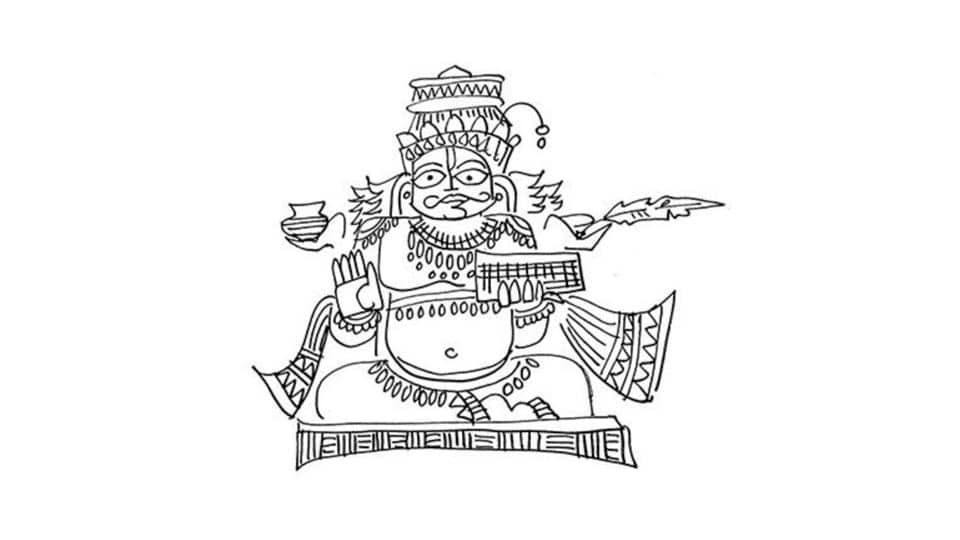By Dr. Devdutt Pattanaik – Author, Speaker, Illustrator, Mythologist
As an Odia child raised in Mumbai, I am often asked about my roots. My parents told me we belong to the ‘karana’ caste. No one in Mumbai had heard of this caste. Later, I learned that karana caste is what is known as karanam in Andhra Pradesh, kayastha in the Gangetic plains and Bengal, and as prabhu in Maharashtra. This is a jati of people who served kings as scribes, bureaucrats and accountants, who went on to become influential courtiers and landowners. While Pattanaik and Mohanty are common karana surnames in Odisha, in the Gangetic plains there were surnames like Shrivastav, and in Bengal there were surnames like Bose and Ghosh.
They served the Gupta kings of the Gangetic plains in the 5th century, the Sena kings of Bengal in 12th century, and the Gajapati kings of Odisha in 15th century. They served the Sultans of Bengal and Mughals in Delhi and the Nawabs of Oudh. They acquired Mughal habits in terms of clothing and diet. Many ate meat but stayed away from beef. A few even converted to Islam, but were identified by the reverence they gave to the pen (qalam) and the inkpot (dawaat). Owing to the proximity to Muslim kings, the British initially shunned them. But by adopting Western education early they managed to establish powerful relations with the new rulers of the land. At one point, in Bengal, nearly a third of mill-owners were from this community.
There are many mythological tales of how this jati originated. In one story, popular in the Gangetic plains, the God of Death, Yama, wanted a scribe to help him keep a record of people’s karma. And so Brahma created Chitragupta (he who knows the secrets of diagrams, that is, scripts), who held in his hand a pen and an ink-pot. From Chitragupta came the kayasthas. In Maharashtra, the story that became popular was that the Prabhus descended from the unborn children of Kshatriya women whose husbands had been killed by Parashurama, who swore they would teach their children to use the pen instead of the sword.
The British tried to map the hundreds of jatis of India to the Vedic four-fold varna system. Where did this socially dominant group and its many sub-groups come from? In the 19th century, rival communities tried to prove in the Calcutta High Court that they were actually shudras and not a mix of brahmins and kshatriyas as they claimed. In Maharashtra, the Chandraseniya Kayastha Prabhus sought to prove they were kshatriyas with the additional right over Vedas, making them quasi-Brahmins, who had helped Shivaji cement his Hindu empire. Some said they were from the Vaishya varna, or the trading caste, which made them good for negotiations. Some said they were Niyogi brahmins, or service-providing brahmins who are different from Yogi brahmins who act as ritual priests.
In the Buddhist Aganna sutta, Buddha speaks of a similar division of brahmins and one wonders if he was referring to kayasthas while speaking of Ajjhayaka brahmins. In most cases, they were seen as kshatriyas, in the sense of owners of fields (kshetra) not warriors, though some still preferred being a higher rank, a mix of brahmins and kshatriyas, which annoyed both Brahmins and Rajputs.
Modern activists would prefer to call these communities ‘savarna’ while the Indian State relegates them to ‘general category’. This is a case in point that the classical four-fold Vedic varna division is inadequate to make sense of India’s complex jati system, despite a cultural obsession to do so.








It is an excellent summary of Dr.Pattanaik who went fathoms deep to the roots of this caste. While there is no cash value as most in this modern times aspire for to spend their “Valuable Time” aiming past is dead and gone, there is history to fascinate for few like me. The narration reflects how people flourished with their knowledge and skills but have resorted to changing times like the history of mankind itself in a smaller focus and for that matter migration of continents which was one earlier.
Some of this and others refreshes mind and thought as to how things change and adopt even without our concern and decision and still lead us to exist. That is the beauty of nature.
I congratulate Dr.Pattanaik and request others in this Mythology/Anthropology/History or what ever we want to call it to start writing as a series as to how such evolution of sect and subsect emerged, flourished and some even disappeared. People who read must be gracious enough to take that in learning spirit and not to encash as a political item dividing people and country.